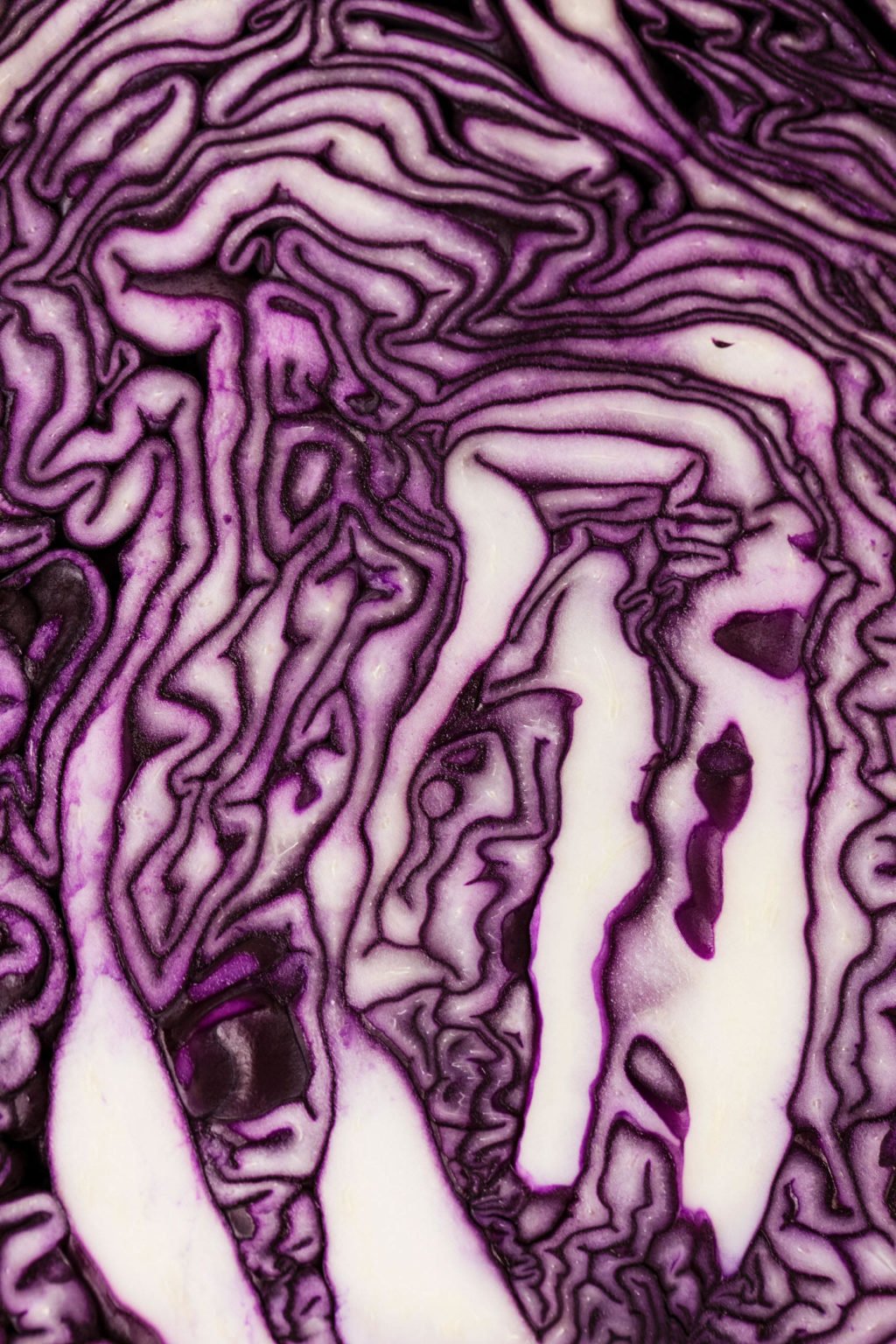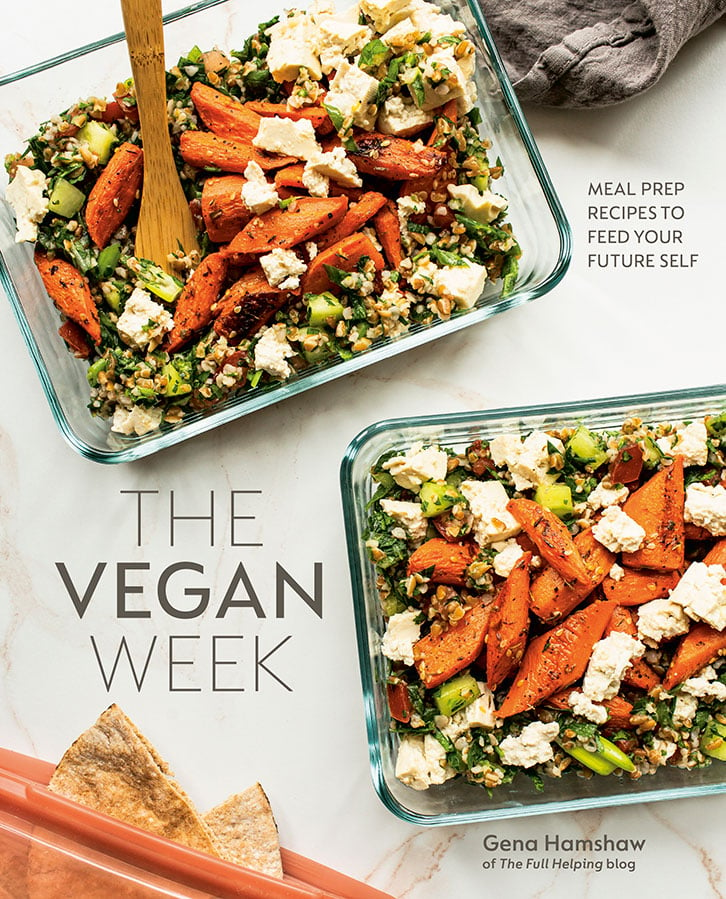I love the versatility and incredible nutrition of cabbage! These 20 healthful cabbage dinners and sides will help you to incorporate this humble and inexpensive vegetable into more of your meals.
I get so excited when I read about, think about, or prepare any recipe with cabbage.
Yes, cabbage. Within the vegetable kingdom, I know that cabbage isn’t always greeted with as much excitement as some of its neighbors.
Even among crucifers, cabbage is unflashy. It seems to receive less attention than broccoli, kale, Brussels sprouts, and cauliflower.
There is no reason for this, however. Cabbage more than holds its own in nutrient density when compared to those vegetables. In some ways, I think that it has greater versatility than they do when it comes to texture and preparation styles.
Cabbage is available year-round where I live. But I feel a special kind of appreciation for it in the deep winter, when it’s one of the few vegetables that is fresh and abundant at the farmer’s market.
There’s nothing I love more than finding myself at home with a giant head of cabbage, thinking about what I’ll prepare with it. I know that I can easily use for two or sometimes even three cabbage recipes.
Today, I’m sharing some of my favorite cabbage dinners and side dish recipes with you. May this winter be a time to celebrate cabbage in all of its forms: crunchy, tender, raw, cooked, savory, and sweet!
Cabbage belongs to a family of flowering plants known as Brassicaceae. The vegetables in this family are also commonly known as mustards and, very aptly, the cabbage family.
When I was writing this post, I was confused about Brassicaceae (brassicas) vs. Cruciferae (crucifers), which is the other classification that I know of for cabbage.
“Cruciferae” is latin for “cross-bearing.” It’s a reference to the shape of the cross-shaped, four-petaled flowers that cruciferous vegetables produce.
Meat dishes: Serve boiled cabbage alongside roasted chicken, grilled pork chops, or baked ham. The sweetness of the cabbage can complement the savory flavors of these meats. Sausages: Boiled cabbage is often served with sausages, whether they’re traditional pork sausages, bratwurst, or any other type.

Raw vs. cooked cabbage
One of the nice things about cabbage is that it has so many culinary uses in both its raw and cooked forms.
In its raw form, cabbage is delightfully crunchy and crisp. It can be sliced or shredded very thinly or left a little more thick, for more texture.
When I prepare raw cabbage, I typically use my food slicer for ease and uniform slicing. However, you can also use a food processor or simply a sharp chef’s knife for this job.
Here’s just a small sampling of the cabbage recipes that you can create with raw cabbage:
- Salads
- Traditional coleslaw and other slaws
- Shredded cabbage for crunch in tacos or burritos
- Cabbage ”cups” for beans, tofu, tempeh, whole grains, or other nutritious fillings
- Sauerkraut or lacto-fermented cabbage
Cooked cabbage becomes tender and sweet. It has wonderful range in recipes!
Cabbage can be cooked with many different methods. You can roast, sauté, steam, or bake it. Steaming cabbage will help the vegetable to retain a bit of its crunch and freshness.
Sautéing and roasting cabbage will allow the vegetable to release its assertive quality and crunchy texture. The longer you cook cabbage, the more mellow, sweet, and soft it will be.
As a registered dietitian, it’s hard for me not to become comically enthusiastic when I write about the remarkable nutrient density of cabbage.
Cabbage is chock-full of so many powerful micronutrients and phytonutrients. These include the following, but aren’t limited to them.
A single cup of shredded cabbage contains more than 50% of the adult RDA of Vitamin C, or ascorbic acid.
Ascorbic acid is an antioxidant, which means that it can help to guard against oxidative damage and its associated inflammatory effects. Ascorbic acid is also important for overall immune function, as well as absorption of iron from food.
Vitamin K is a fat soluble vitamin that’s necessary for the production of two important proteins. One is prothrombin, which plays a key role in blood clotting.
The other is osteocalcin, which is produced by osteoclasts in our bones. Osteocalcin plays a role in metabolism and is increasingly thought to play a role in cognition and reproduction, too.
There are two naturally occurring forms, or vitamers, of Vitamin K. One is a group called menaquinones, often labeled as Vitamin K2. Menaquinones can be obtained through some animal foods as well as natto, or fermented soybeans.
The other is phylloquinone, also labeled as Vitamin K1. Phylloquinone is supplied abundantly by brassicas, cabbage included!
Phytosterols are a type of plant compound that has a similar molecular structure to cholesterol.
For this reason, they compete with cholesterol in digestion pathways, essentially blocking cholesterol absorption. Phytosterol consumption has been shown in studies to have the effect of lowering total and LDL cholesterol.
Cabbage is a good source of phytosterols generally. Chinese cabbage, one type of which is also called Napa cabbage, is an especially good source.

Anthocyanins are a type of pigment that’s found in red, purple, and blue fruits and vegetables. Accordingly, red cabbage is an excellent source of anthocyanins.
This is good news, because anthocyanins are, like the Vitamin C that’s also in cabbage, antioxidants.
Their antioxidant activity helps to explain why anthocyanins have been associated with protecting the cardiovascular and nervous systems, both of which are susceptible to oxidative stress.
Anthocyanins are associated in particular with neuroprotective properties, which means that they may have a positive impact on neurological health and the prevention of cognitive decline.
You may have read at some point that blueberries are a positive food choice for those looking to boost brain health, and this is why.
Similarly, the anthocyanins in red cabbage may help to support longterm cognitive health and function.
Glucosinolates form from cabbage and other brassicas, including kale, broccoli, and arugula. They’re sulfur-containing plant compounds that contribute to the bitter taste we tend to associate with these cruciferous veggies.
Like anthocyanins, glucosinolates are increasingly being studied for their potential to support cardiovascular and neurological health through combatting oxidative stress.
Glucosinolates become bioactive when brassicas are broken down through chewing or chopping. This is a reason to chew your cabbage slaws and slice or chop your cabbage before cooking it!
Finally, cabbage is also a great source of dietary fiber, which contributes to digestive health and satiety after meals.
Dietary fiber also plays a role in helping to lower LDL cholesterol, which is the “bad” cholesterol associated with increased risk of cardiovascular disease.

Embrace the joy of eating homemade food every day with the hearty and wholesome recipes in The Vegan Week.
Whether you have three, two, or even just one hour of time to spare, The Vegan Week will show you how to batch cook varied, colorful, and comforting dishes over the weekend.
What does cabbage taste like?
Brassicas tend to have slightly bitter, sharp, and peppery flavors. I love this flavor profile, and I think it’s part of why cabbage is such a favorite of mine.
The beautiful thing about cabbage, though, is that its sharp bite can be entirely transformed with cooking.
When you braise, simmer, sauté, or roast cabbage for enough time, it’s pepperiness and bitterness give way to a lovely, deep sweetness of flavor.
While I enjoy the assertiveness and crunch of raw cabbage, I also love to bring out this sweet side of its character.
Why I Didn’t Know This CABBAGE Recipe Before? BETTER THAN MEAT!
FAQ
What is the healthiest way to eat cabbage?
Is it OK to eat cabbage everyday?
Is cabbage good for your stomach?
What do you eat raw cabbage with?
What can you eat with cabbage?
Use cabbage in a healthy breakfast hash with pork sausage or bacon and apples, as a unique nacho topping, added to pasta, or to make any kind of savory galette. Wondering what goes with cabbage?
Is cabbage good for athletes?
Yes. Cabbage has vitamins A, B complex and C, which stimulate the body’s natural defenses, and is also a good source of minerals, calcium, magnesium and manganese, which contribute to bone growth and mineral density. Thus, it prevents osteoporosis, arthritis and other inflammations.
Does cabbage go well with meat?
You’ve probably tried cabbage with a variety of sides, and you might have even tried it as an entree. But have you ever thought to add meat? If not, today is your lucky day. We’ve done the hard work for you and compiled a list of 13 meats that go surprisingly well with cabbage.
Does pork go well with cabbage?
Pork pairs well with cabbage because it has an earthy taste that goes well with the vegetable’s sweetness. The key here is to make sure your pork is cooked until just before being done so that it still has some chewiness and moisture left in it when paired with the slaw. 4. Veal
